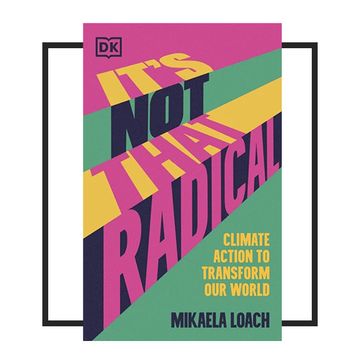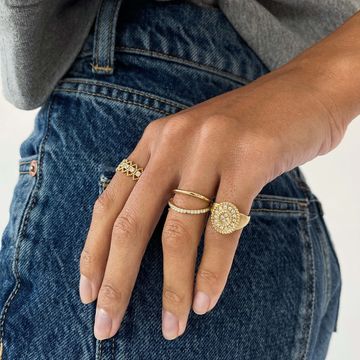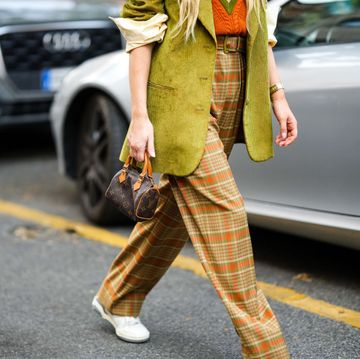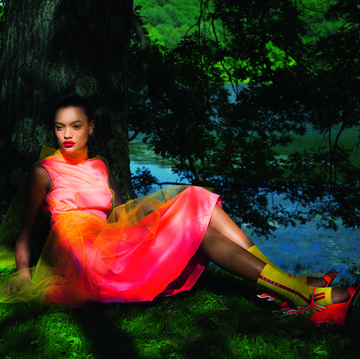Ten years ago, Gordon Renouf and Sandra Capponi came together to launch a brainwave idea: an app that would rate fashion brands based on their impact on the environment, workers and animals. At the time, there was a deficit of trustworthy information about how our favourite labels were making our clothes. Renouf and Capponi both felt that what shoppers wanted from their clothes was changing; all we needed was more information to make better choices.
Within eight days of its launch in Australia, Good On You had notched up 10,000 downloads. Today, the app’s reach goes far beyond the Southern Hemisphere – it’s used by millions every month across the US, UK and Europe. Emma Watson has been a big advocate, and treats it as a benchmark for the retailers she shops at. Good On You has become the Ofsted for fashion – a reliable review system that can be accessed from wherever you might be shopping.
“It was such an energising way to start and proved that we were providing a real solution for shoppers,” says Capponi from her base in Australia. “Since then we’ve been running to keep up with the demand both from conscious shoppers and also businesses wanting to find out how to improve their scores. We’re tapping into something meaningful for people. We all have values and we live and breathe them every day, often without noticing. Fashion itself is about looking and feeling good and none of us want to buy something if we know it’s harming something or someone else.”
At last count, Good On You had rated more than 6,000 fashion and beauty brands based on their respective ethical and environmental credentials. Its five-point scores, which start at 1 for ‘We Avoid’ to 5 for ‘Great, are based on a complex and rigorous system combining of tech, data spreading and analytics’. The app’s global team of 20 experts analyse retailers based on up to 1,000 data points across 100 key issues, with focus on three key factors: people, animals and the planet. It's now available via its own website, as well as bricks-and-mortar stores and e-commerce platforms such as The Outnet. “We only consider publicly reported information,” says Capponi. “For some brands where there is very little information, it’s a quick process but they score poorly because they haven’t been transparent about what’s happening behind the scenes.”
Since Good On You’s 2015 inception, the industry has become more engaged than ever in meaningful change, but there is still huge room for improvement from the big heavyweights. The app’s first performance report, released earlier this month, found that large fashion brands score just 30% on average for environmental impact measures, while small businesses perform better at 46%. Meanwhile, 88% of brands with emissions targets don't disclose any progress toward meeting them, and – despite extensive talk about circularity – only 3% of large fashion retailers offer rental schemes and just 13% have resale programmes.
Part of the issue is that smaller brands are able to work more closely with their suppliers to understand the practices and implement positive initiatives, whereas the larger a company becomes – particularly in the luxury space – the more challenging it is. “Luxury brands have a lot more influence over their suppliers than small labels and overall have a bigger impact on their environment, so we believe they should be doing more to set higher standards and make sure it’s being upheld,” says Capponi.
Higher price points don’t necessarily mean a product is more ethical. Some of Good On You’s lowest scoring brands belong to the high-end space. “Luxury is often associated with quality and some people associate that with sustainability, but it’s more nuanced,” she explains. “It’s true that luxury often runs slower, smaller production runs with more durable materials, but it’s also known for using harmful materials like exotic animal skins and furs, and synthetics which we we know use a lot of chemicals, water and energy.”
Waste, she says, is also an issue across the board, whether high street or premium. “Most luxury brands produce more than they sell and luxury brands especially are known to destroy excess stock to protect their brand identity,” she says. “It’s about going back to what luxury is. There’s a real opportunity for fashion’s luxury maisons to use their resources to lead in this area and show the rest of the industry what good practice looks like in the same way it does for design.”
Of course, there is no entirely ethical and sustainable way of shopping; any new item bought has required a certain amount of natural resources and carbon footprint to reach us. Even booming pre-loved destinations Vinted and Depop face challenges with distribution and transportation having an impact on carbon emissions. All we can do is make smart, considered decisions about what we buy, take better care of what we already own and ignore impulse purchases. “We always encourage people to look for alternatives to buying new as a starting point,” says Capponi. “That might be reviving or repairing something in your wardrobe or doing a clothes swap with a friend. I wear a lot of my mum’s vintage pieces – her wardrobe is a treasure trove!”
Good On You has now set its sights on adding homeware, food and electronic brands to its roster, which it hopes to roll out in the next few years. “We want to be a comprehensive solution for shoppers to help them make more informed purchases on whatever it is that they’re buying, as well as providing a service to retailers,” says Capponi, before adding: “The world feels heavy right now and we can feel helpless. The app helps us to feel like we’re making choices that allow us to be part of the solution. I know that sounds cheesy but there is real power in that.”
GOOD ON YOU'S TOP FIVE RATED LUXURY BRANDS:
DoDo
Stella McCartney
Boucheron
Balenciaga
Pomellato
THE TOP FIVE ON THE HIGH STREET:
Vaude
Puma
G-Star Raw
Everlane
Patagonia















